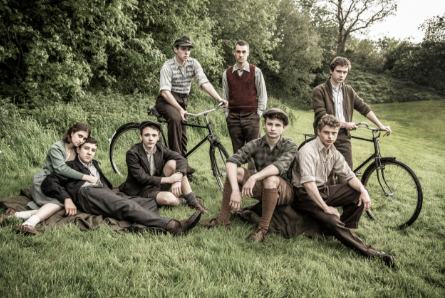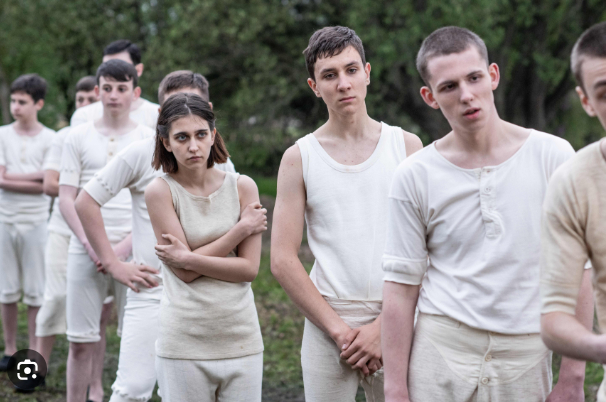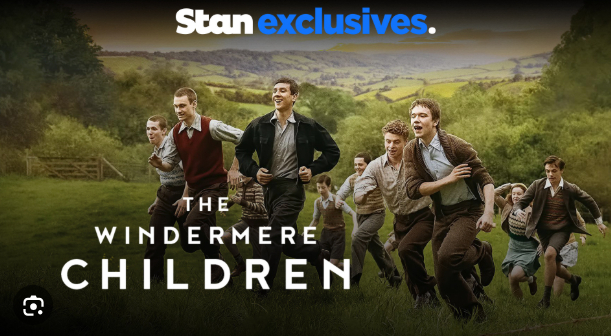The Windermere Children (2020)
I. PLOT OVERVIEW
The Windermere Children (2020) tells the incredible true story of a group of Jewish children who survived the horrors of the Holocaust and were given a second chance at life at Windermere, a tranquil lakeside town in northern England. The film focuses on the efforts of a dedicated group of social workers and educators who try to help these young survivors rebuild their lives in the aftermath of unimaginable trauma.
The children, many of whom had lost their families, homes, and identities, arrive in England to find a sanctuary that, while offering a safe haven, is far from a cure for the emotional scars they carry. The film highlights the struggles of both the children and those who care for them as they attempt to adjust to a new life and a world that seems alien to everything they’ve known.
The center at Windermere becomes a pivotal point of transformation, where not just the children, but also the adults involved, learn the true meaning of healing. Despite the trauma they carry, the children slowly begin to trust again, finding community and hope in the people around them. Through language lessons, art, and counseling, the film captures their emotional journey, showing how even after the darkest of times, the human spirit can find a way to grow and thrive.
II. THEMES & EMOTIONAL DEPTH
The Windermere Children is a deeply moving exploration of survival, resilience, and healing. The theme of hope after trauma runs through every frame, portraying how the children find the strength to reclaim their future despite the haunting memories of their past. The film doesn’t shy away from the horrors they endured but balances this with a sense of possibility, showing that even after suffering, it is possible to begin anew.
The relationship between the survivors and their caregivers becomes central to the emotional heart of the film. The social workers, many of whom were unsung heroes, play a vital role in the children’s recovery, teaching them the tools to rebuild their broken spirits. Their empathy, patience, and dedication provide a sense of stability, but they too must deal with the emotional toll of witnessing the children’s suffering and finding ways to help them open up and trust again.
Another central theme is identity. For the children, who were stripped of their families and homes, their sense of self was shattered. As they learn to speak English and integrate into British society, they also begin to piece together who they are—no longer just survivors, but individuals with the potential for a new life. The film examines how memory, identity, and a sense of belonging are crucial to healing after profound loss.
III. CHARACTER DEVELOPMENT AND PERFORMANCE
The film features a talented ensemble cast that brings a profound emotional depth to the story.

- Thomas Kretschmann as Dr. Franz Mitterer: Kretschmann delivers a strong, empathetic performance as Dr. Mitterer, a psychologist who helps the children begin to understand and cope with their trauma. His calm demeanor and deep sense of compassion make him a central figure in the healing process, and his character represents the hope that even after suffering, there is always room for recovery.
- Mickey’s Role (played by [Actor’s Name]): As one of the children, Mickey’s journey is particularly poignant. Initially distrustful and silent, Mickey’s progression from a broken child to someone who begins to open up and trust again is a powerful testament to the strength of the human spirit. The young actor’s performance brings the emotional weight of the character to life.
- Supporting Cast: The ensemble cast, which includes characters representing both the children and the social workers who help them, contributes to the film’s emotional depth. Each child has their own story, and the cast’s portrayal of their gradual healing is both heartbreaking and inspiring.
IV. CINEMATOGRAPHY AND DIRECTION
Directed by Michael Samuels, The Windermere Children captures the balance between the horrors of the past and the promise of a new beginning. The cinematography is poignant, using the serene beauty of Lake Windermere and the surrounding countryside as a contrast to the inner turmoil of the children. The gentle landscapes symbolize the possibility of recovery, while the cinematographic choices often linger on the children’s faces, revealing the pain and the quiet moments of hope.

The pacing of the film is deliberate, allowing time for reflection and character development. The emotional intensity builds gradually, allowing the audience to truly connect with the children’s struggles and triumphs. The use of natural light throughout the film also enhances the sense of realism, grounding the supernatural journey of healing in the everyday struggles of life.
The soundtrack, with its subtle yet evocative score, amplifies the emotional beats of the film. The music becomes a backdrop to the children’s emotional journey, reinforcing moments of tenderness and sorrow, while also highlighting moments of growth and transformation.
V. FINAL VERDICT
The Windermere Children (2020) is an exceptional film that brings to light a crucial and often overlooked chapter in history. Through its rich storytelling, nuanced performances, and emotional depth, the film offers a poignant reflection on the resilience of the human spirit in the face of unspeakable trauma. It is a deeply moving story that showcases how, even in the aftermath of the most horrific experiences, it is possible to heal, rebuild, and find hope.

The characters, both the survivors and those who helped them, are portrayed with empathy and authenticity, making this film not just a tale of survival, but a celebration of compassion, community, and the enduring power of love and healing.
Rating: 9/10
A deeply moving and beautifully crafted film that honors the legacy of the children who survived and the people who helped them rebuild their lives. The Windermere Children is a must-watch for anyone interested in stories of resilience, hope, and the human capacity for recovery.
